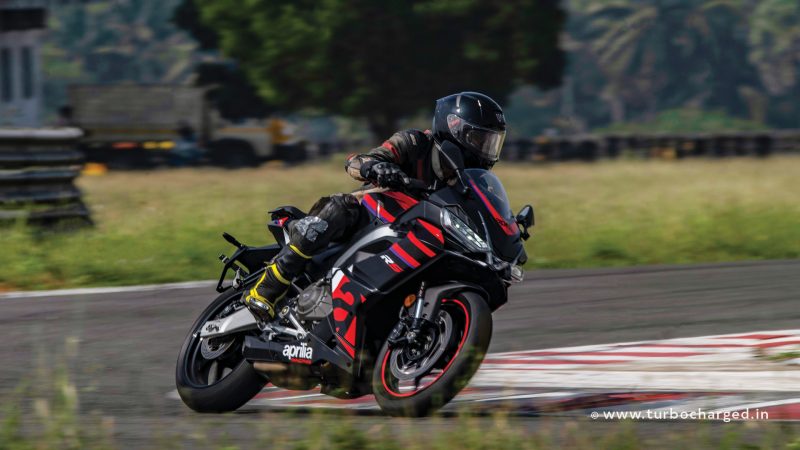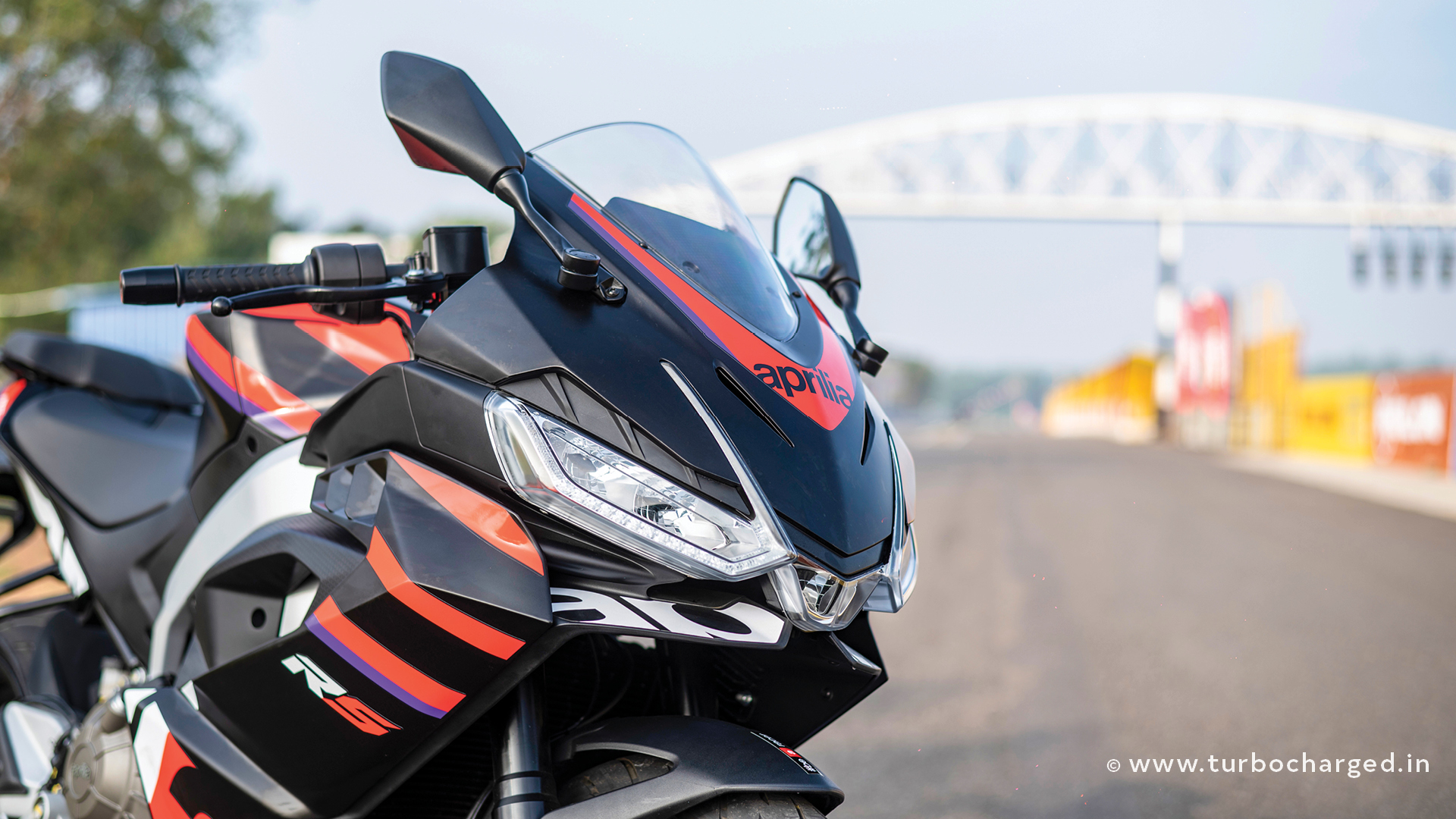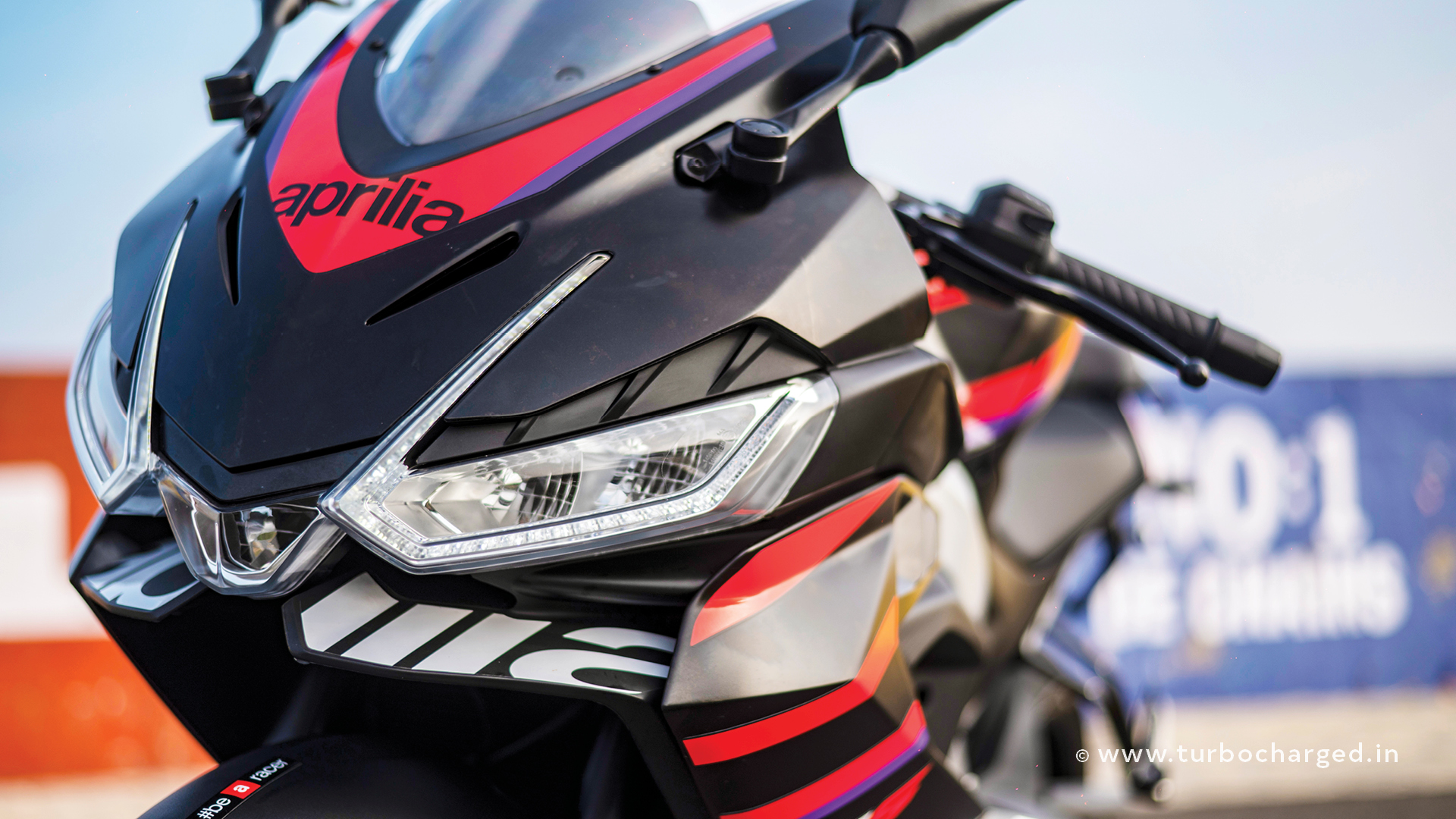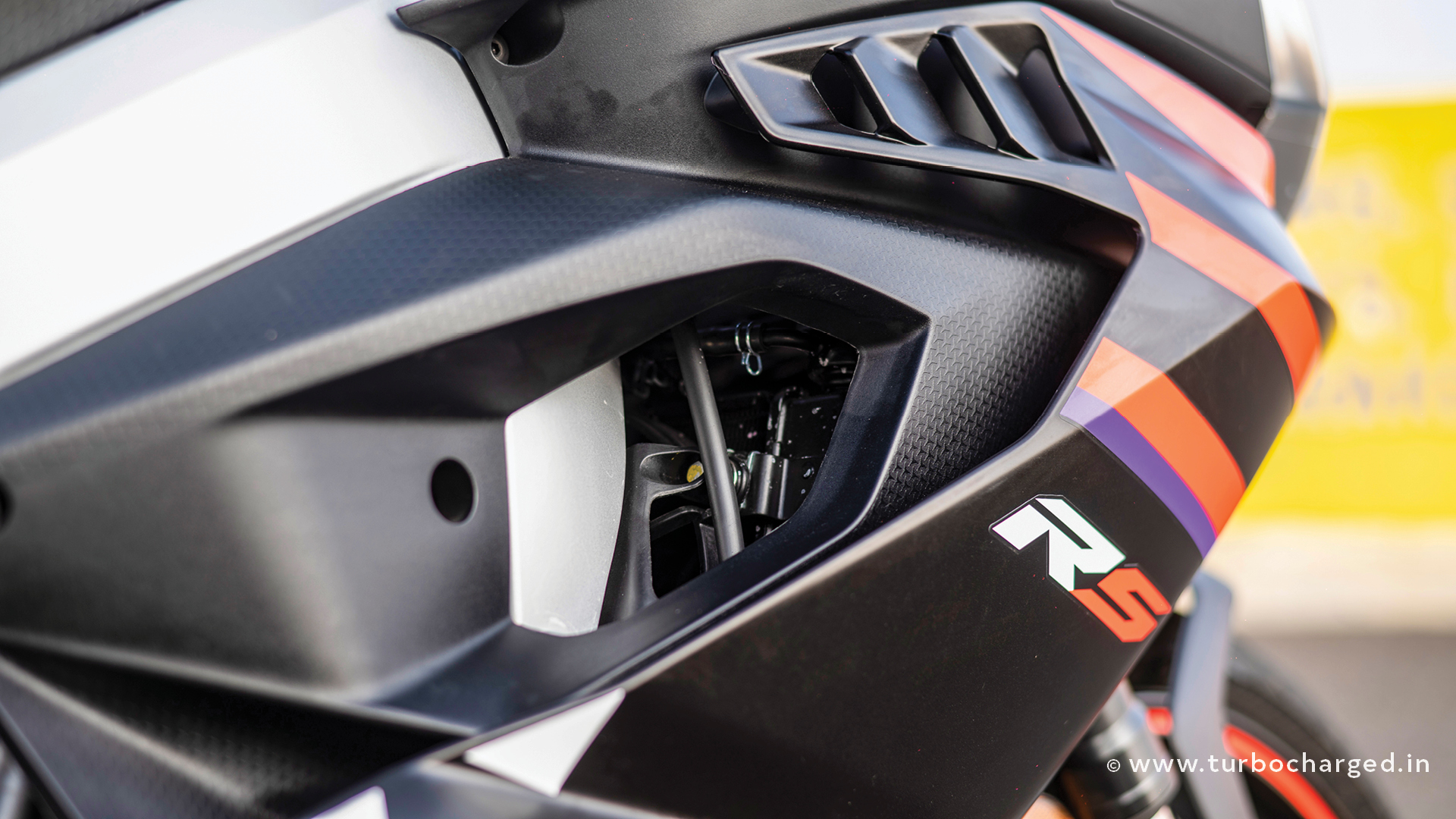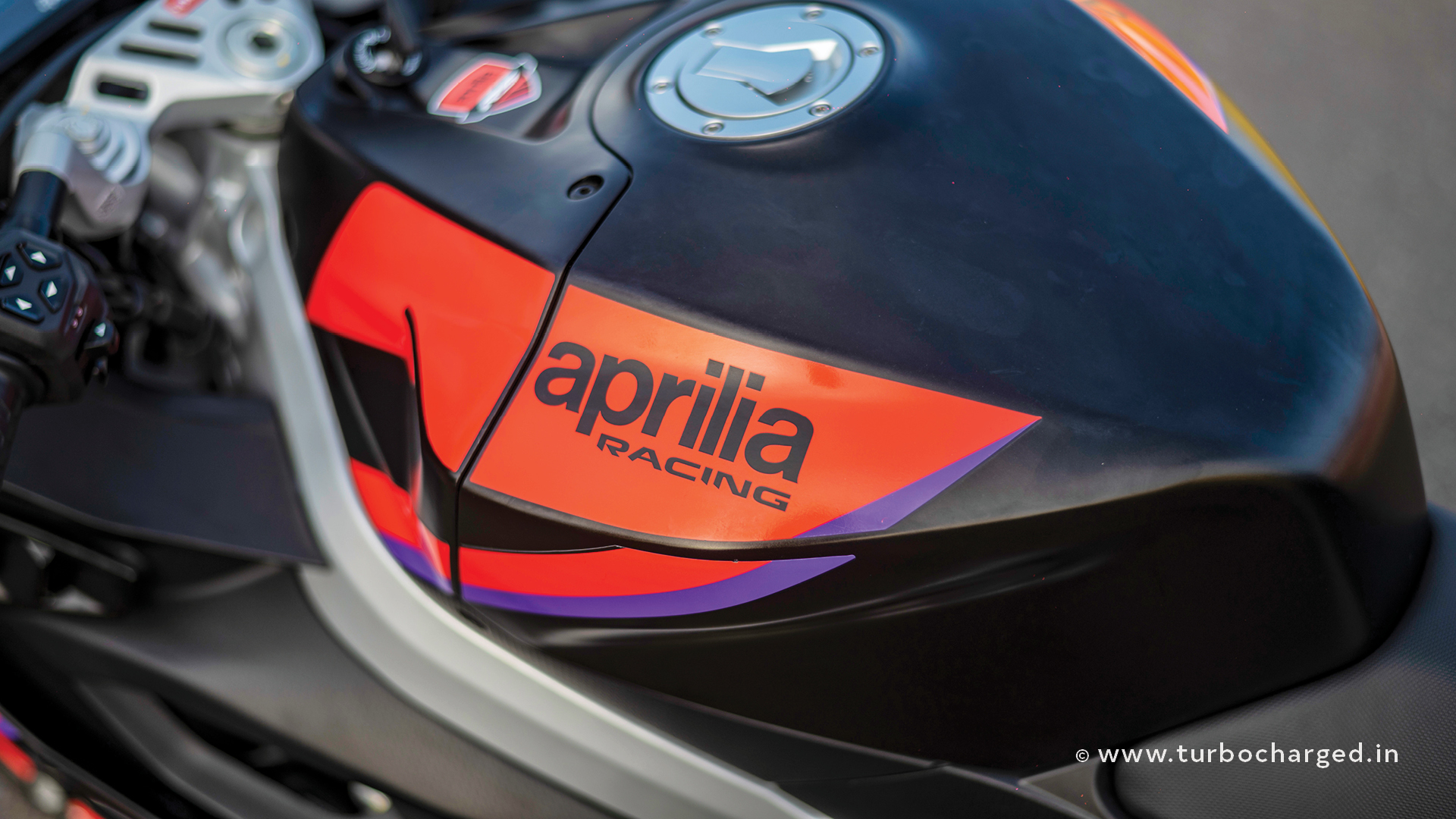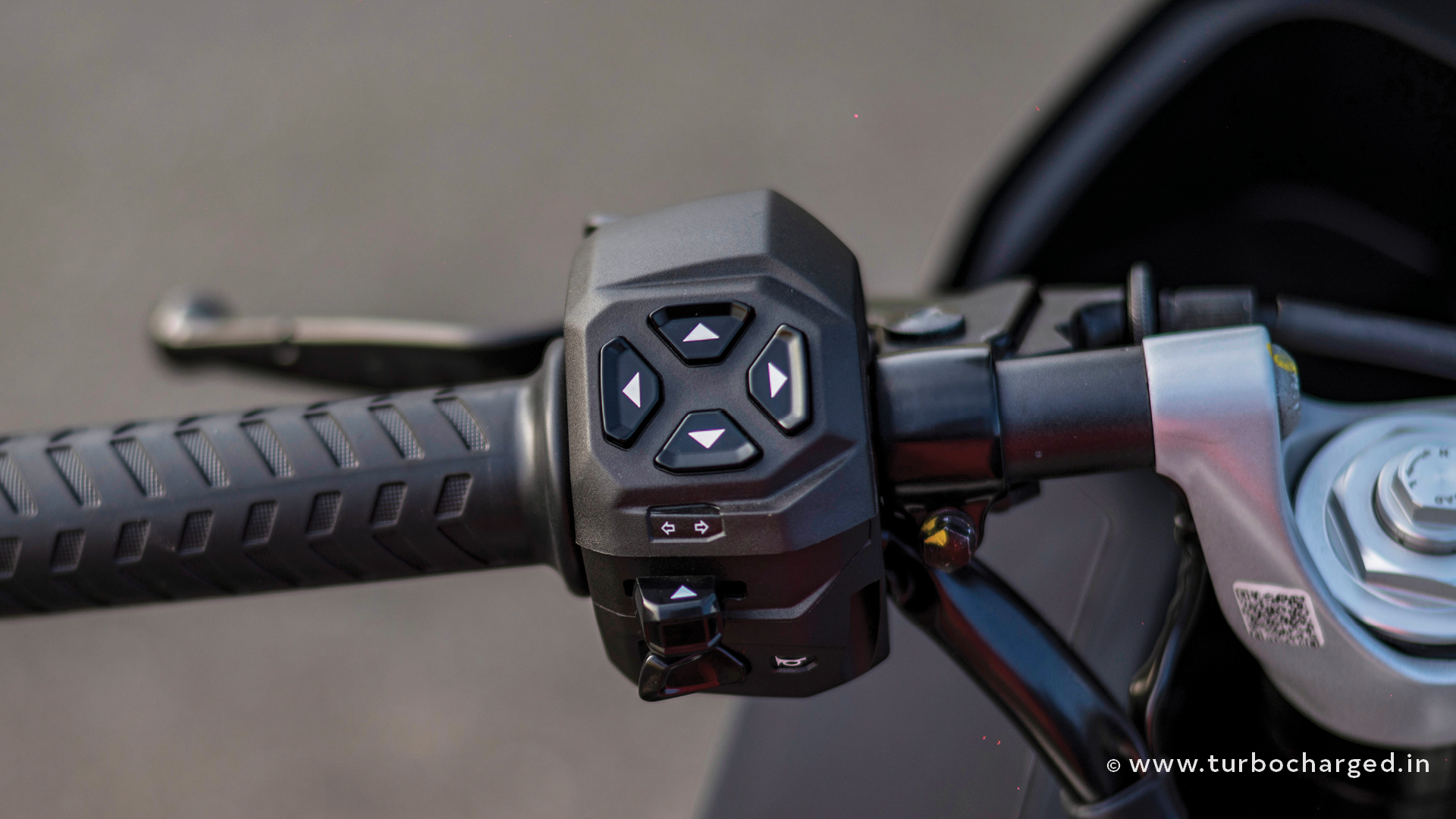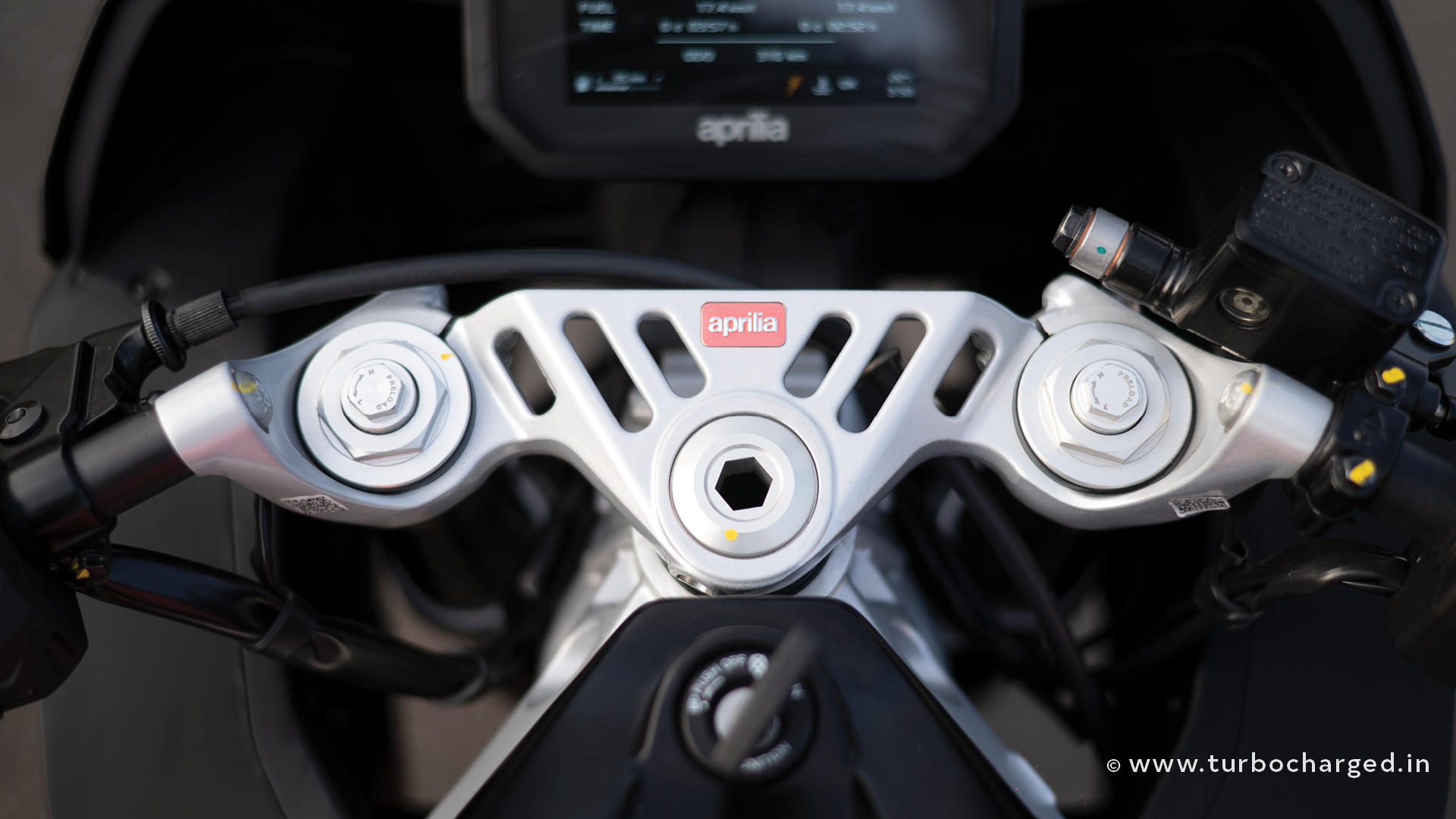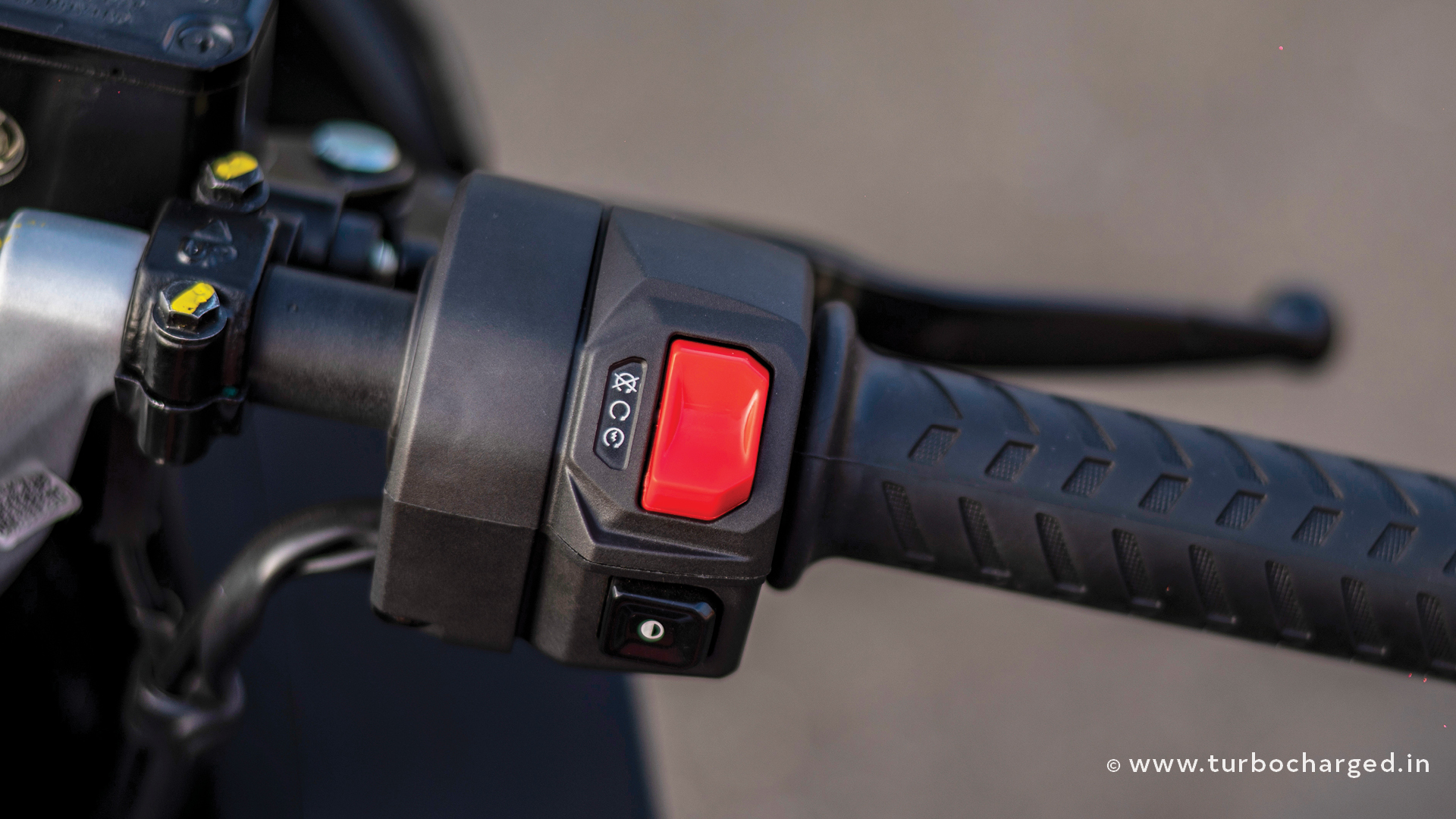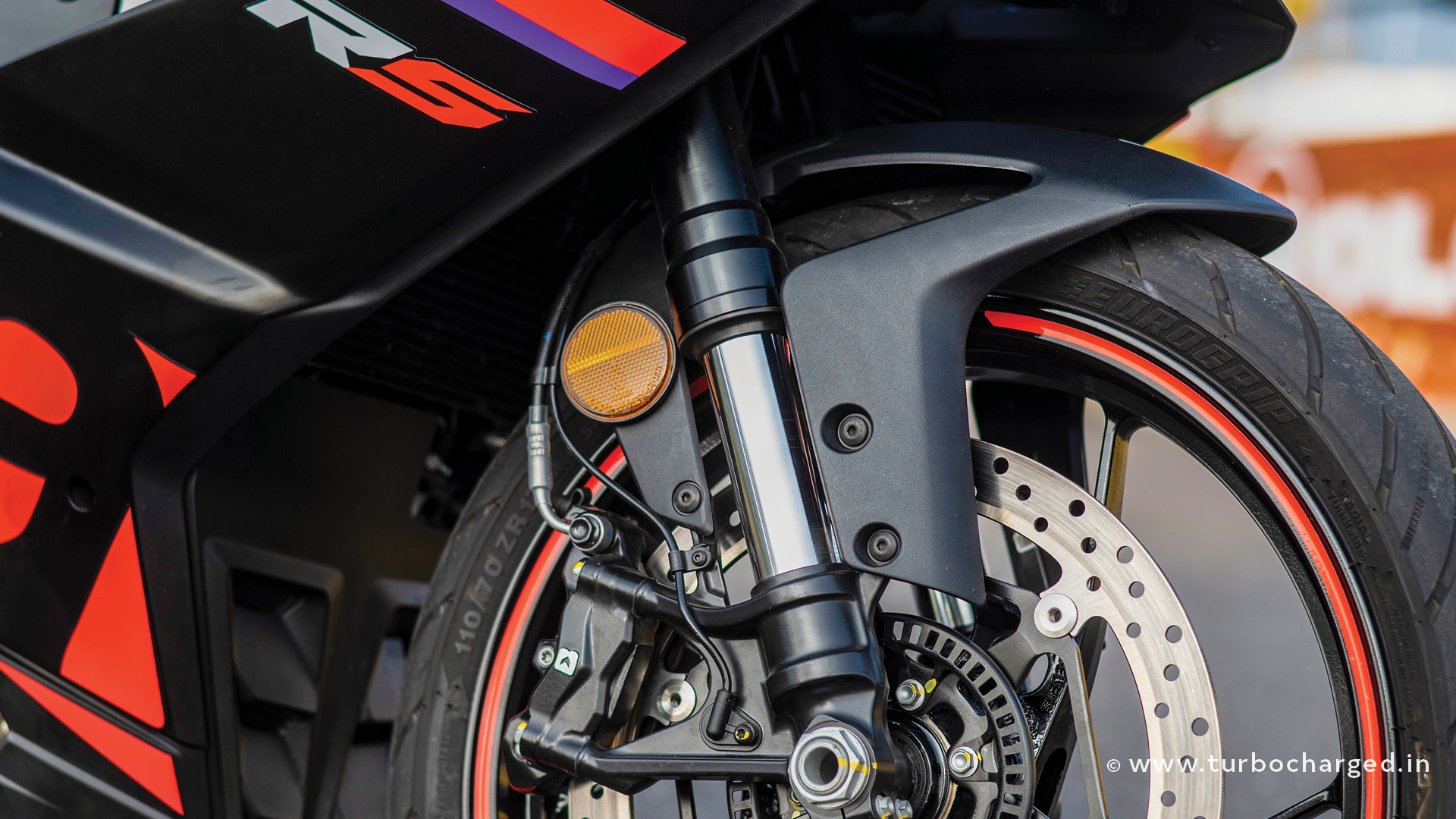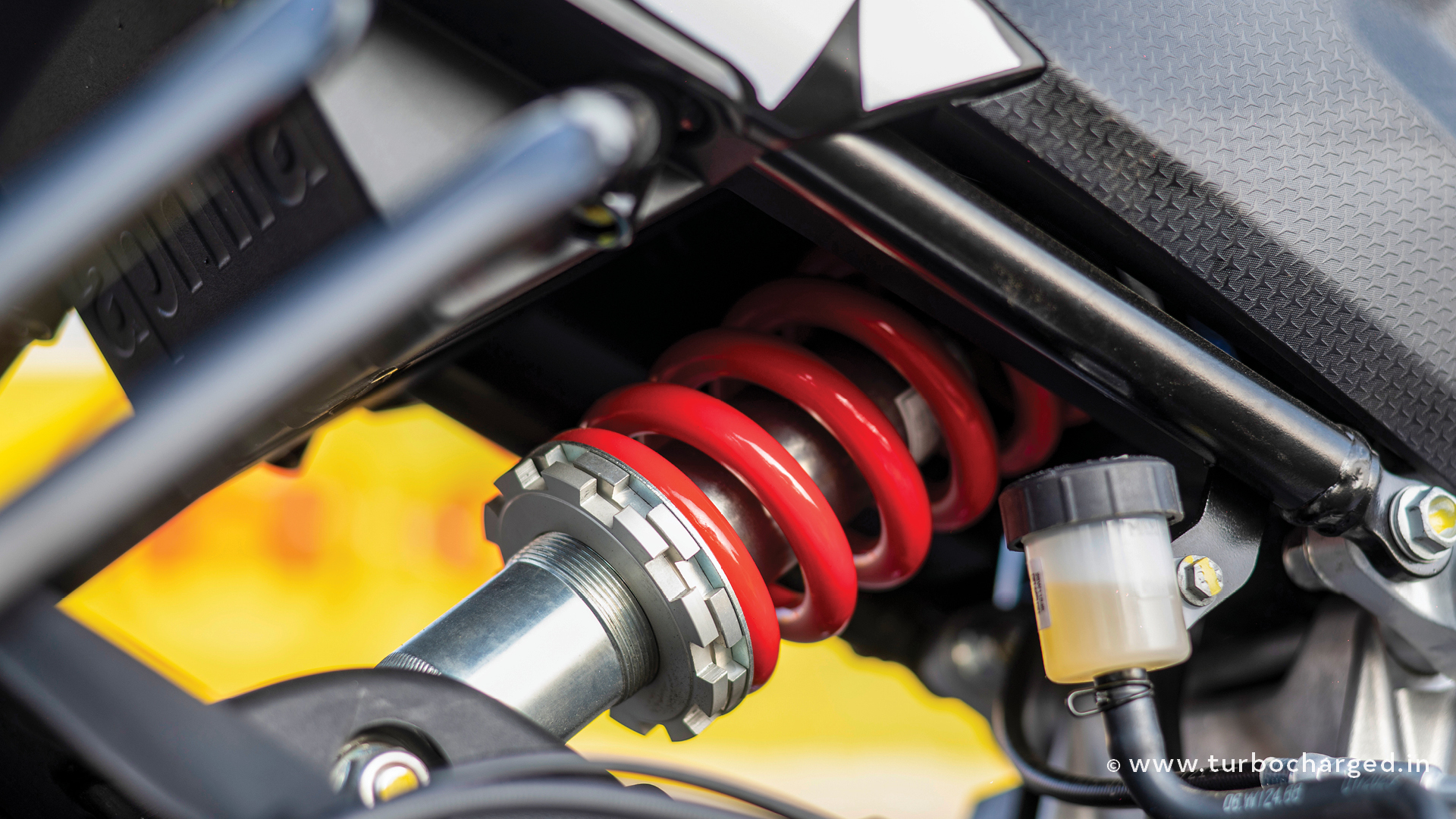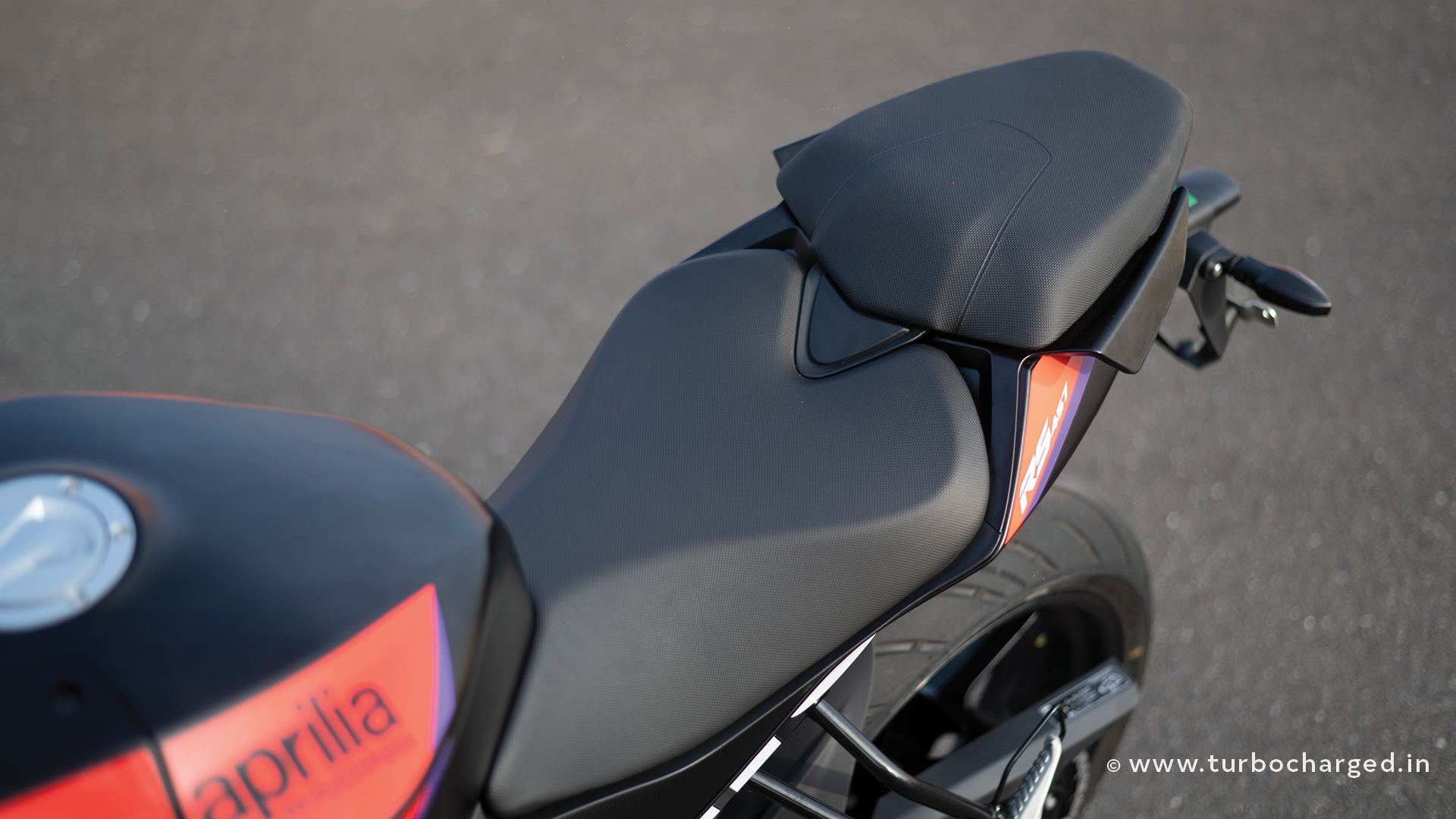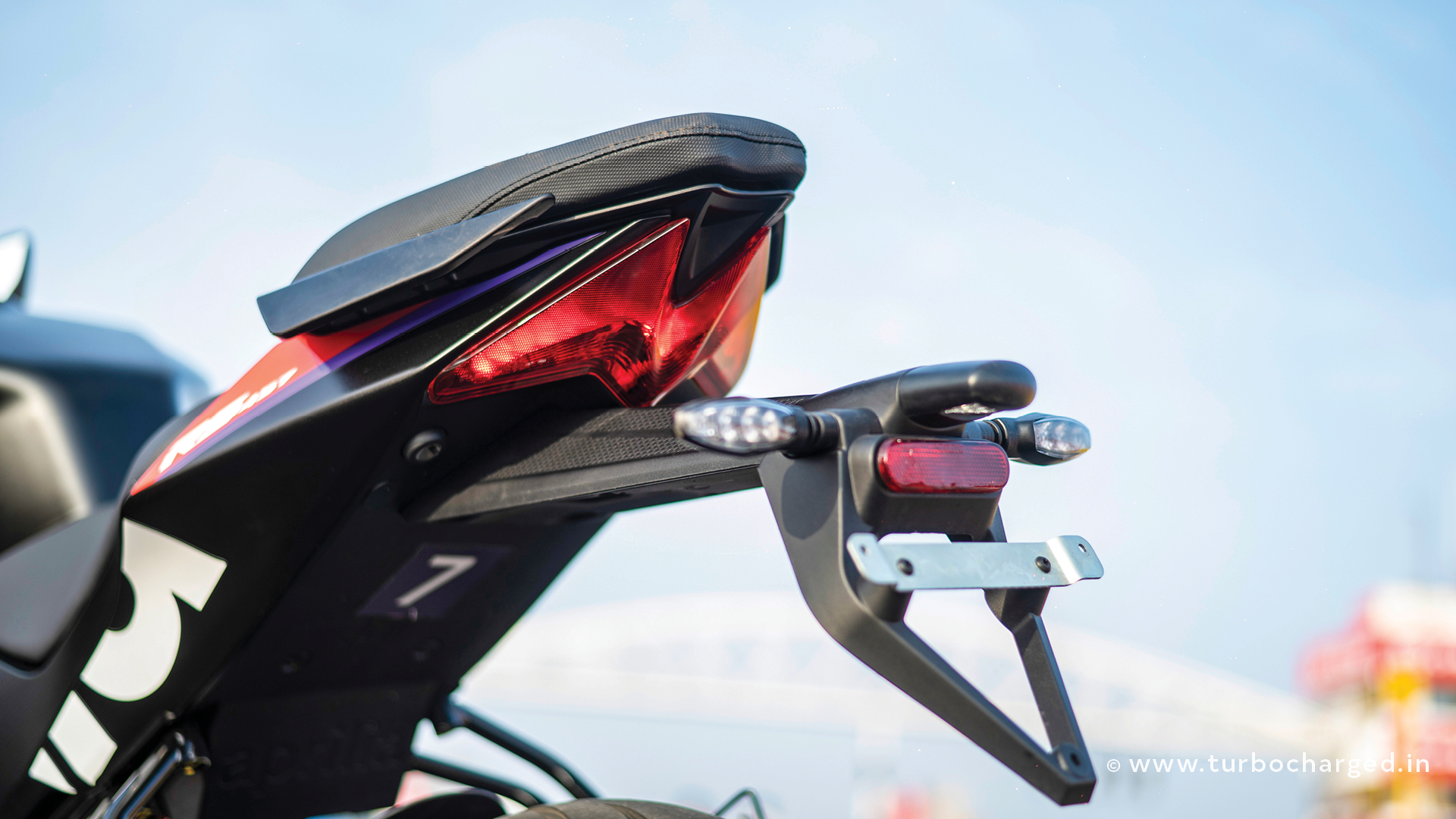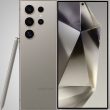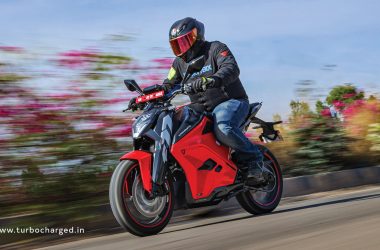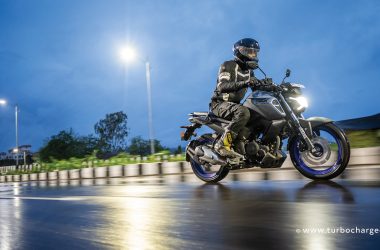Photography: Siddhant Gadekar
Aprilia is known in the motorcycling world for its exotic and invigorating motorcycles like the RSV4, Tuono and more recently the RS 660. While the Italian bikemaker sells its mid and large-capacity motorcycles in India, its entry-level rung has been limited to scooters. Now Aprilia has been teasing a smaller, more affordable yet enticing replica of its larger motorcycles for years now. The wait is finally over with the RS 457 and probably just at the right time when the middleweight supersport segment is slowly but gradually growing, from orange hues to the dark side. Does the RS manage to stand out and more importantly offer the same evocative feel expected from Aprilia? We spend a day riding it at the Kari Motor Speedway in Coimbatore to find out just that.
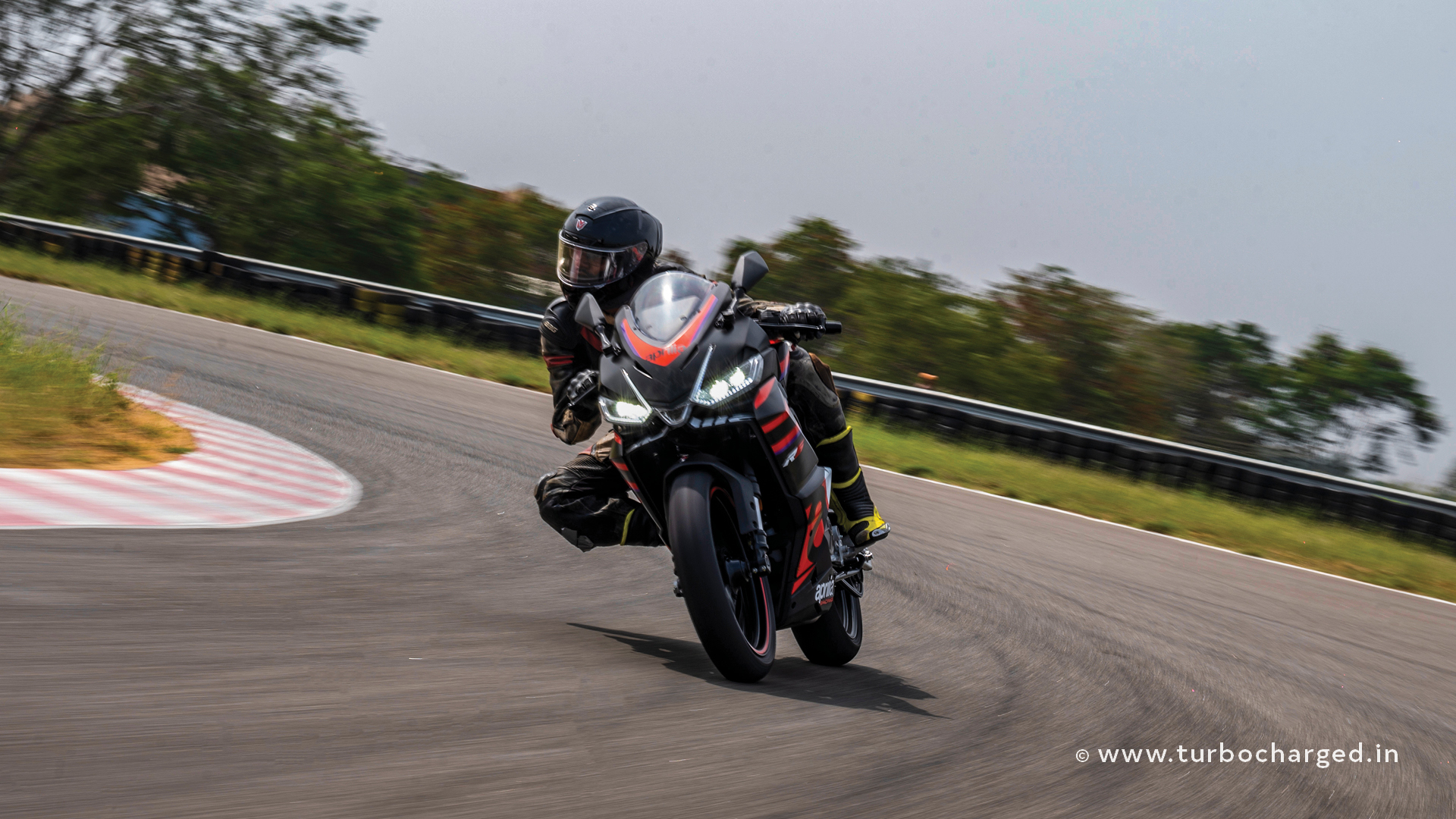
The RS 457 bears a strong resemblance to larger Aprilia Supersports like the RS 660 and RSV4 and to the aspirational Indian enthusiast, that’s half the battle won. In fact, it’s quite easy to mistake the RS 457 for its bigger sibling, from a distance. It gets a familiar looking split LED headlamp setup under a transparent visor, all beautifully housed in muscular fairing. You even get an Aprilia-badged lip, albeit only on the Racing Stripes livery you see in the pictures. The fairing looks sharp and helps channel air more effectively. I particularly like the fin-like vents on the upper half of the body that add more flair to the design. The 13-litre fuel tank looks surprisingly large for its capacity and has been ergonomically sculpted to allow you to grab it with your knees. The tail section looks sleek and houses a tail lamp identical to the one seen on the RS 660. The RS also impresses with its build quality and comes across as a well-built premium motorcycle. If we were to nitpick, we’d like the switchgear to have slightly better tactility. Overall, the Aprilia RS 457 scores full marks in design and is surely one of the best-looking motorcycles manufactured in India.
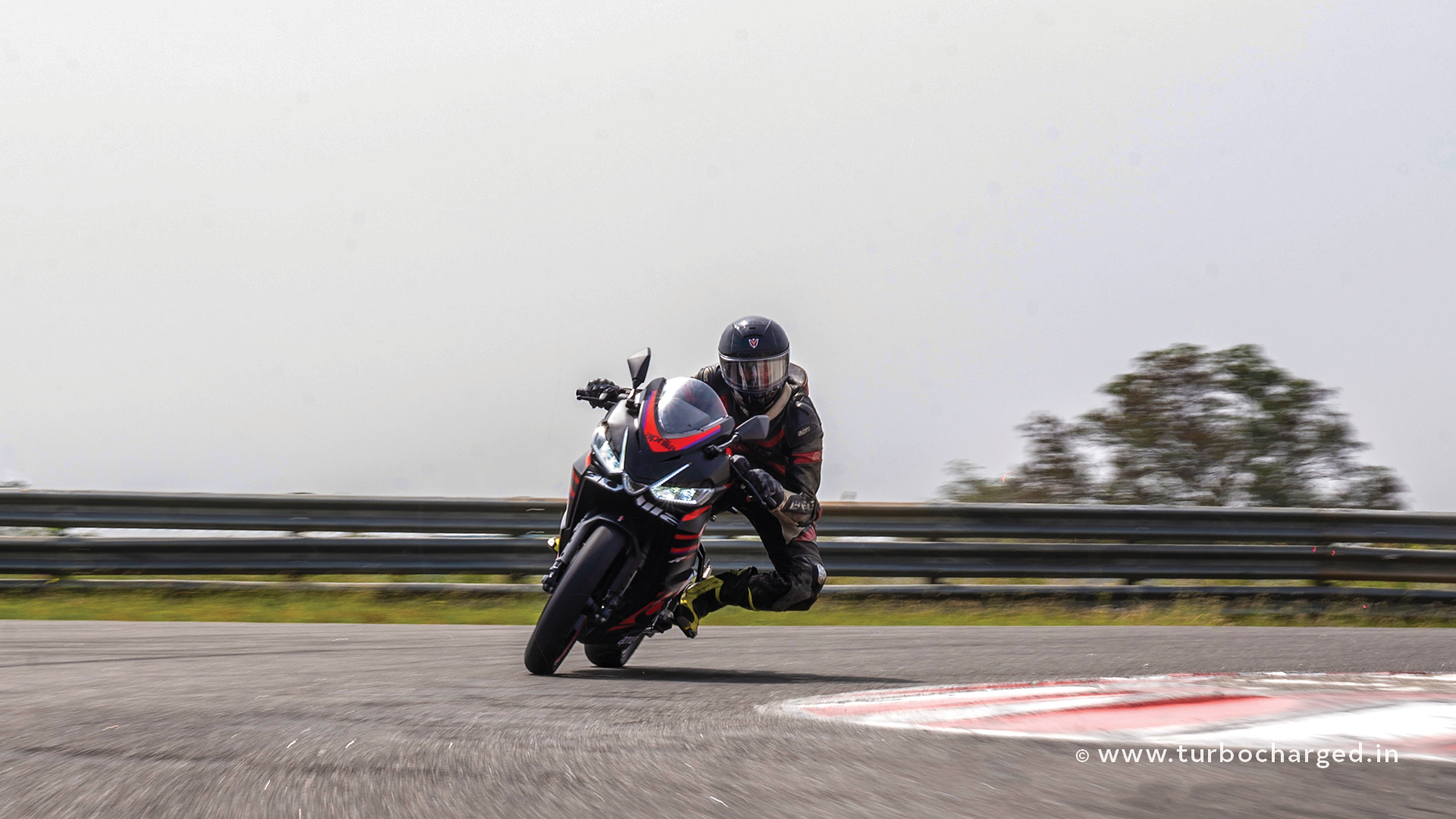
Like its design, the RS 457 impresses on the features front. You get a 5-inch TFT instrument cluster that lets you access the traction control and ride modes via the backlit switchgear. All-LED lighting and slip and assist clutch come as standard as well. Smartphone connectivity and a quickshifter are only available as accessories, though. You also get ride-by-wire along with three ride modes – Rain, Eco and Sport, that alter the power, torque and traction control settings. The traction control offers four settings, including an option to turn it off completely. You also have the option to disable the rear ABS.
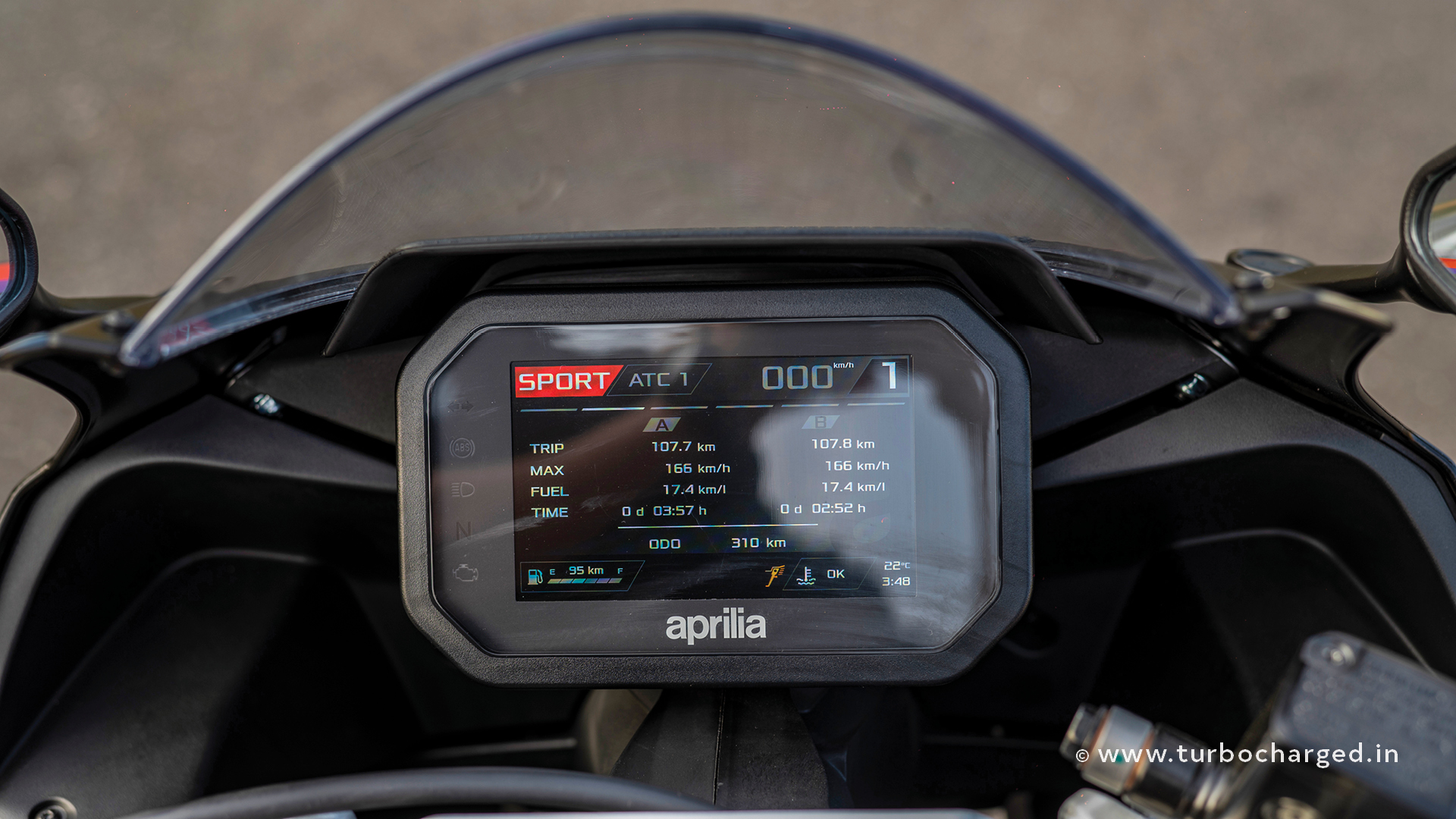
The ergonomics are one of the highlights of the motorcycle, offering a comfortable riding position without compromising on the supersport’s sporty intent. The clip-on handlebars are wide and placed above the fork clamp, which means you can ride for a longer duration before straining your wrists. Similarly, the footpegs are rearset but at a comfortable height and offer ample legroom for taller riders. The 800mm seat itself is a bit narrow and it’s quite easy to slide forward under hard braking.
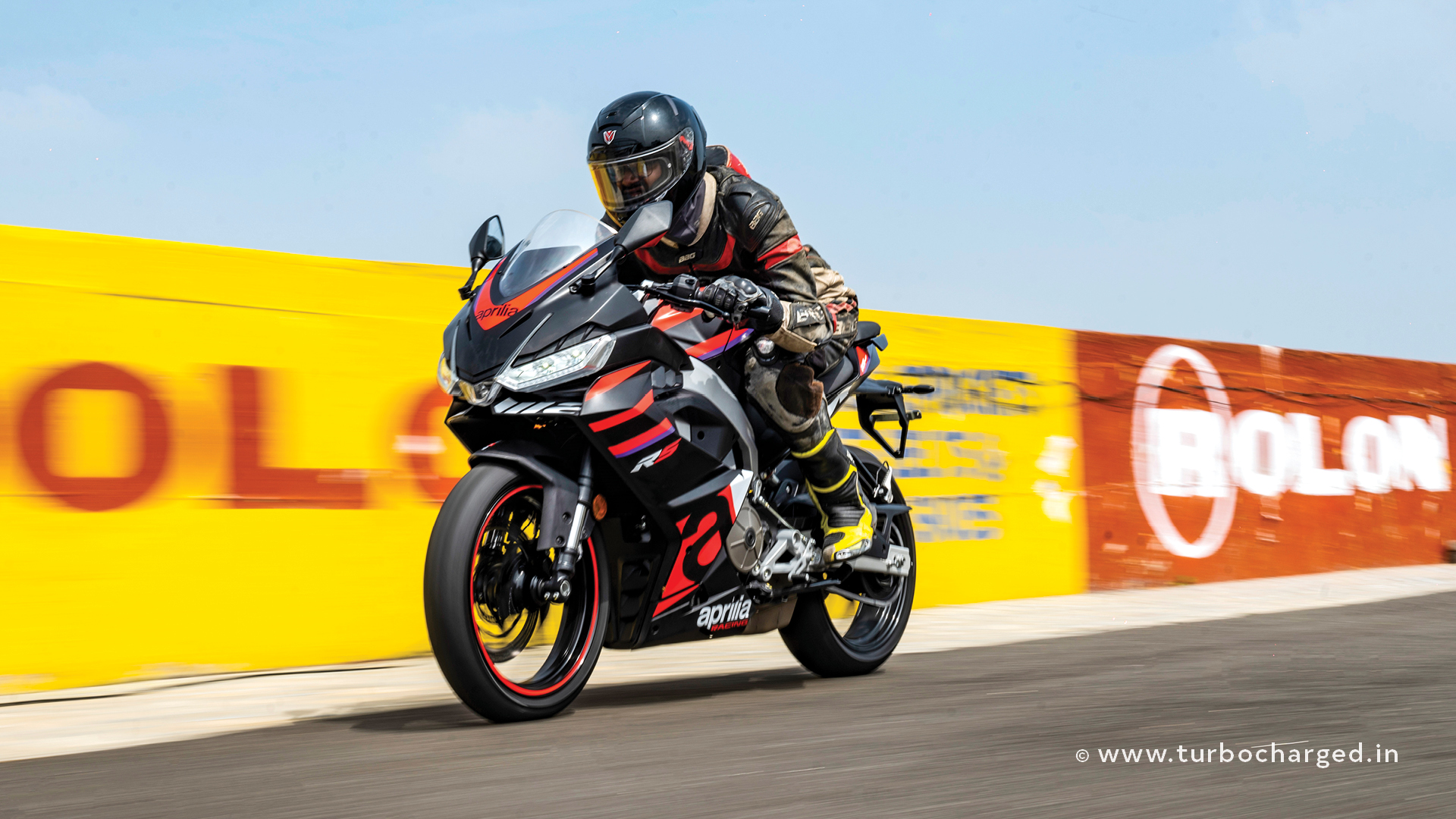
The 457cc liquid-cooled parallel-twin engine puts out 48PS and 44Nm, in a package that tips the scales at 175kg. Impressive outputs aside, the engine offers its peak torque at just 6,700rpm, which is pretty early for a supersport and makes its quite tractable. Kari Motor Speedway is a technical track with a couple of straights and a bunch of slow corners. Despite this, I managed to ride the entire sighting lap in the 4th gear, with the motorcycle effortlessly darting out of the corner. Riding in Sport mode with traction control set to level 2, the throttle offers a crisp response and is quite engaging. The engine redlines at 10,500rpm which isn’t as high as its Japanese parallel twin rival, the Yamaha R3, but given the ample amount of torque on offer in the low and mid-range, you would seldom have to rev it that high on public roads. The refinement in the low and mid range is great but vibes start to creep in through the footpegs closer to the redline.
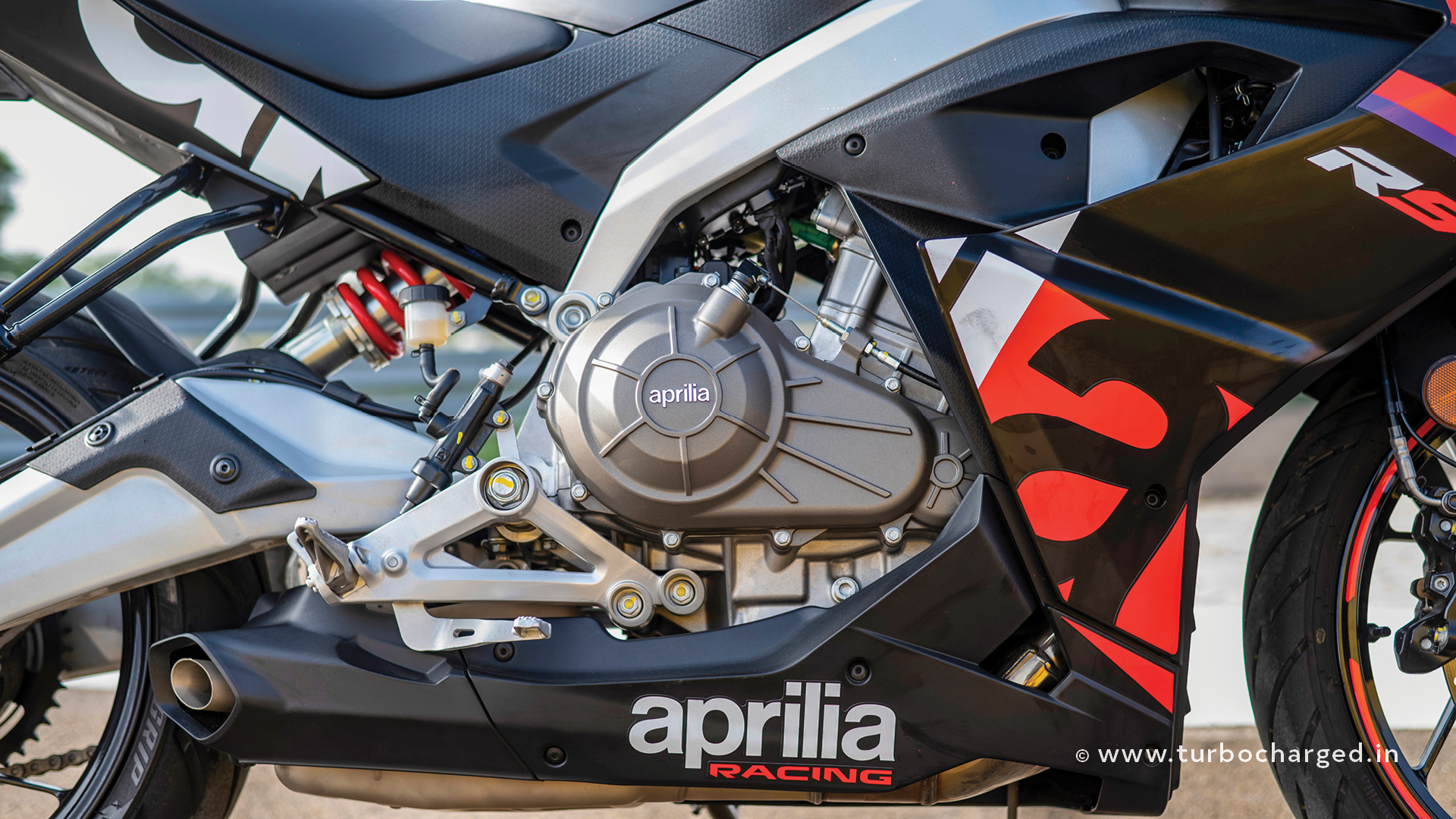
The six-speed gearbox offers smooth upshifts but felt a tad reluctant to downshift quickly when riding hard. Our test motorcycles weren’t equipped with the optional quickshifter which I feel should make shifts smoother and more intuitive for use on the track. That being said, the clutch action is light and the slip and assist function works flawlessly.
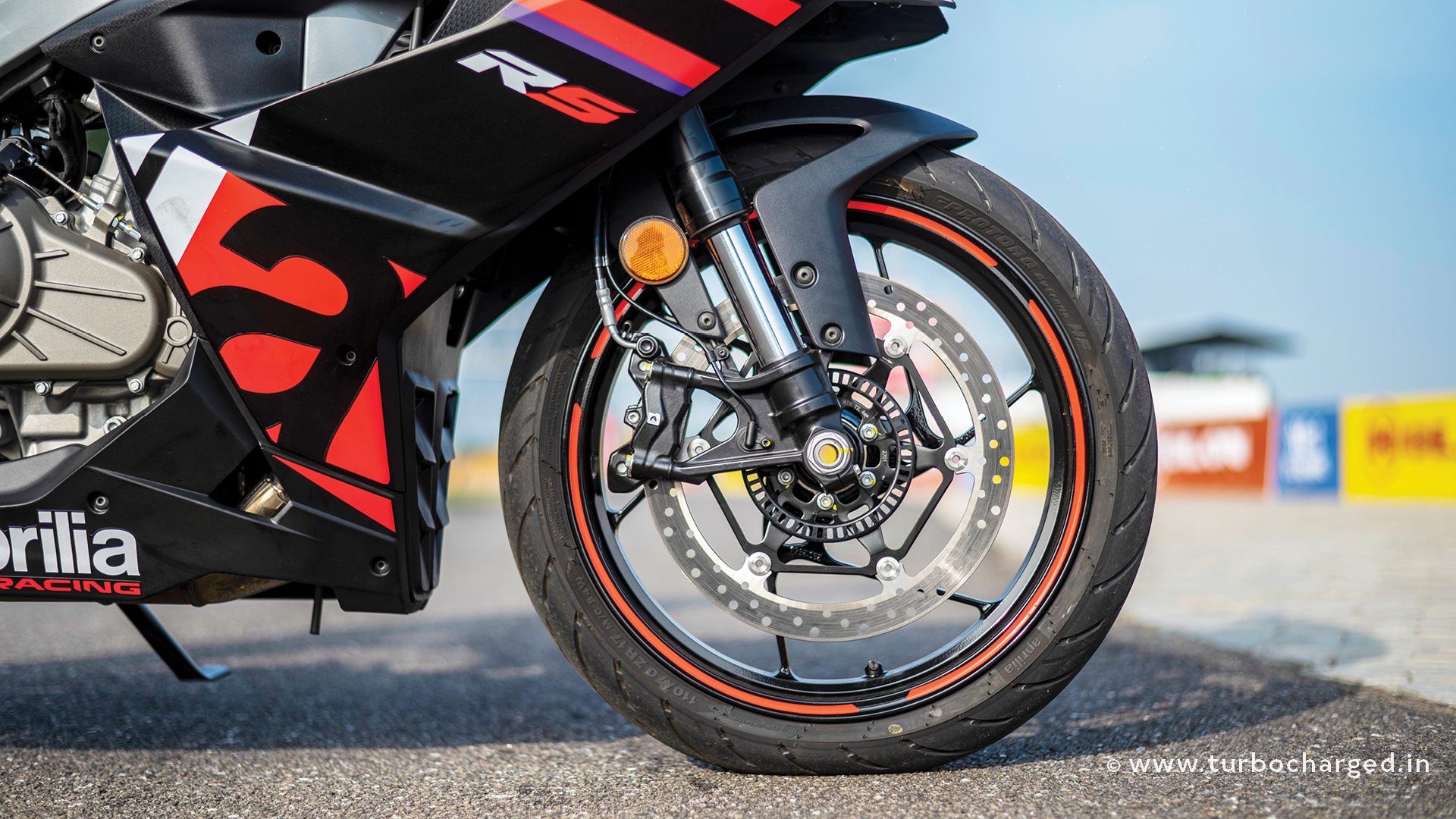
The RS457 is underpinned by an aluminium frame with the engine acting as a stressed member. Suspension duties are handled by 41mm USD forks and a monoshock, both offering preload adjustability. Out on the track, the RS 457 feels hyper-responsive, effortlessly changing directions even with minimal inputs. At the same time, it won’t snap at you, should you make abrupt direction changes. It’s quite a forgiving motorcycle for novice riders while being a precise tool in the hands of expert riders, like MotoGP test rider Lorenzo Savadori who rode with us on the track, dragging his elbow on corners and making it look so easy.
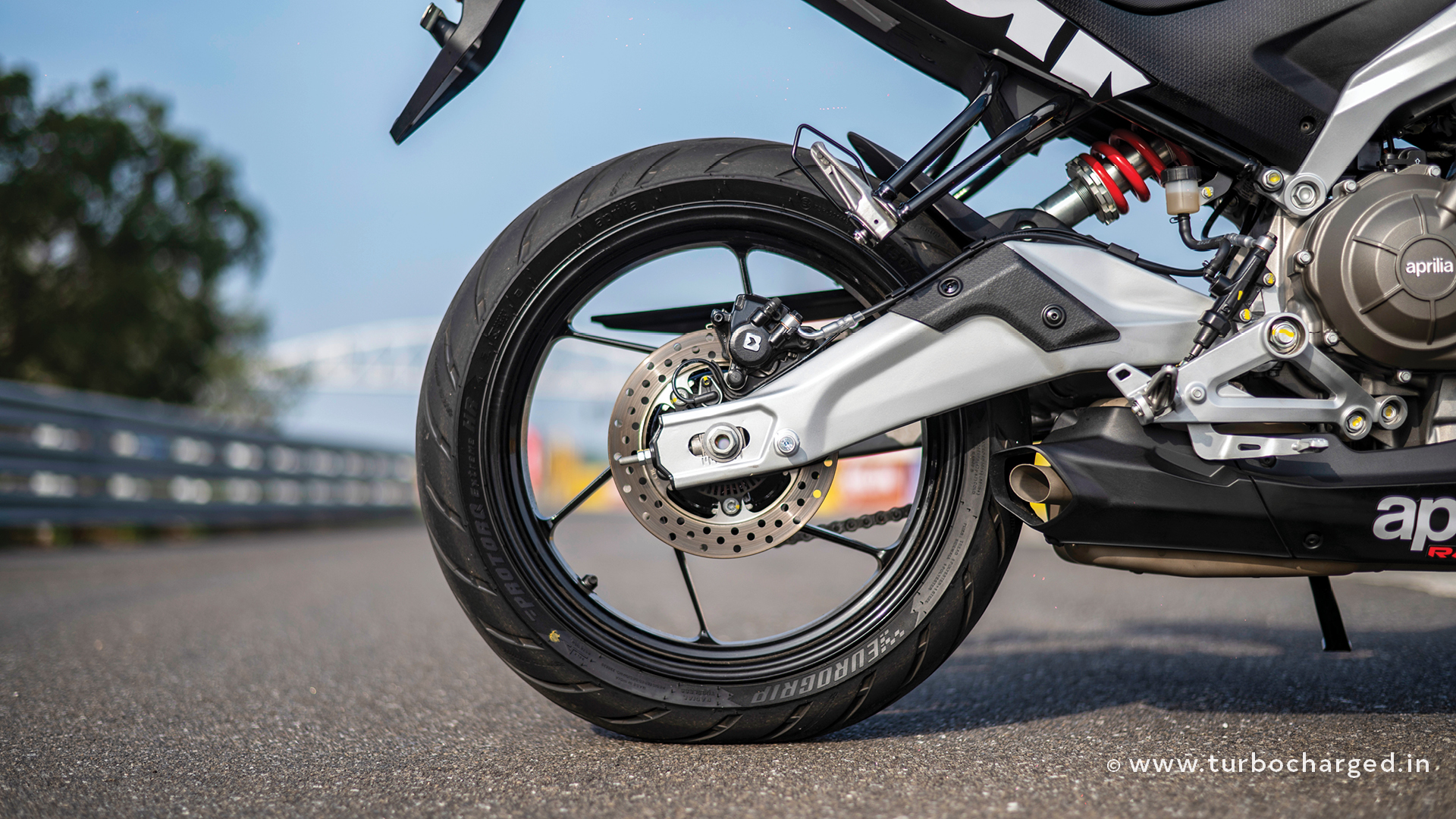
Braking hardware consists of a ByBre 320mm front floating disc with 4-piston radial callipers and a 220mm rear disc. While the braking prowess is decent, the front brake pedal lacks bite for the initial 30-40 percent application, which robs you of confidence. We also experienced brake fade in the final laps. This is the only sore point in what’s quite a dynamic package.
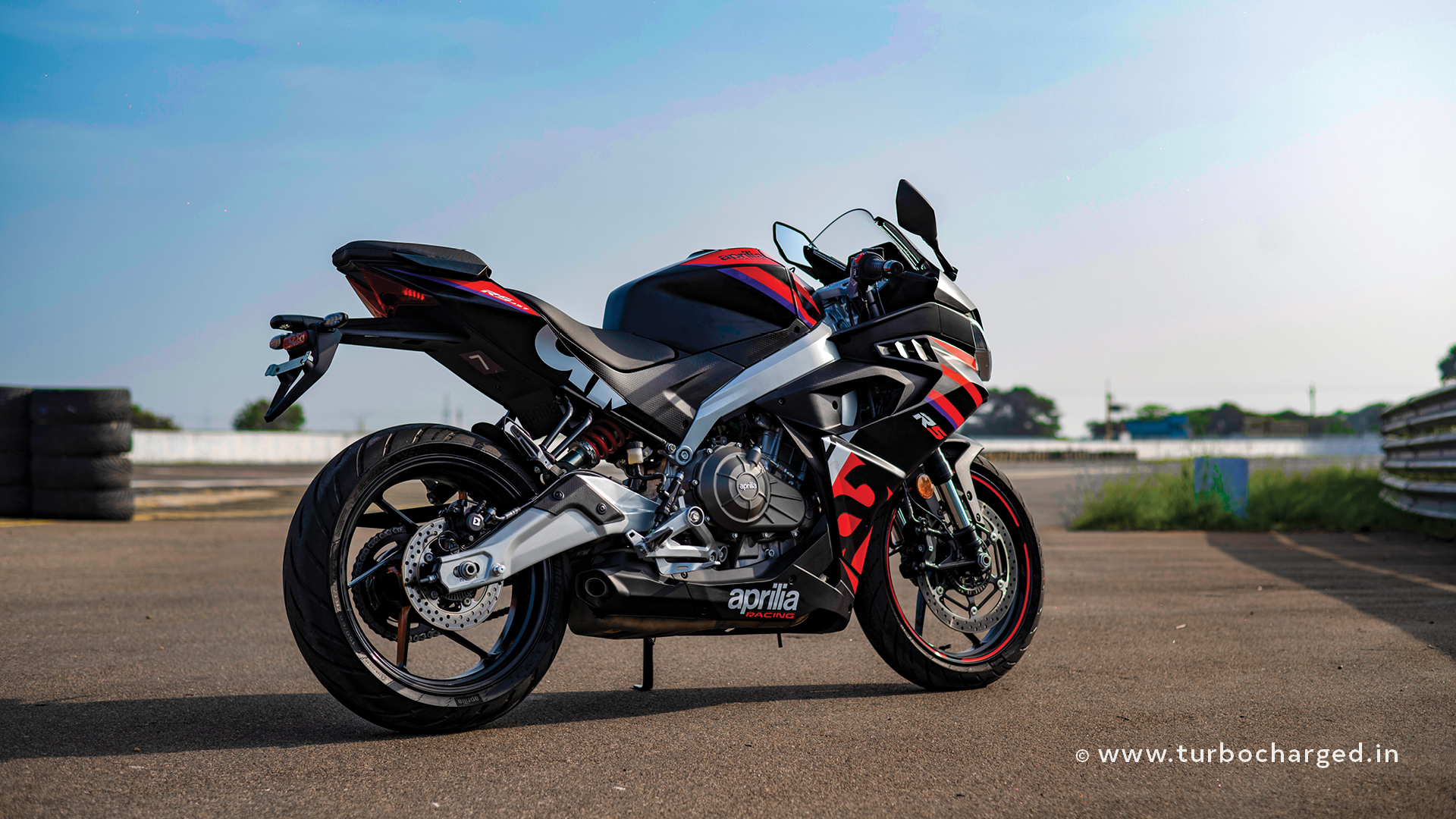
The Aprilia RS 457 makes tall claims on paper and delivers too! The cherry on top is the Rs 4.10 lakh ex-showroom which makes it a fantastic VFM proposition. The RS 457 has a lot going for it. It looks smashing and has impressive build quality, is feature-packed, and the engine is powerful and engaging with the dynamics to back it up. The only worry is Aprilia’s limited dealership and service network, which should be solved soon given the ongoing dealer expansion across India. The Aprilia RS 457 easily takes the crown for entry-level motorcycles on sale in India.





